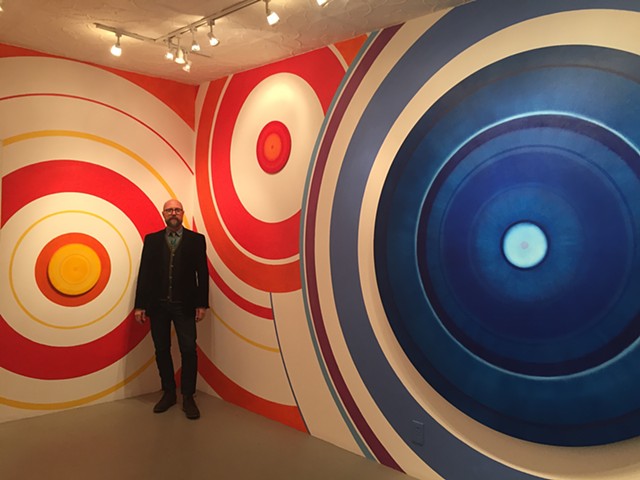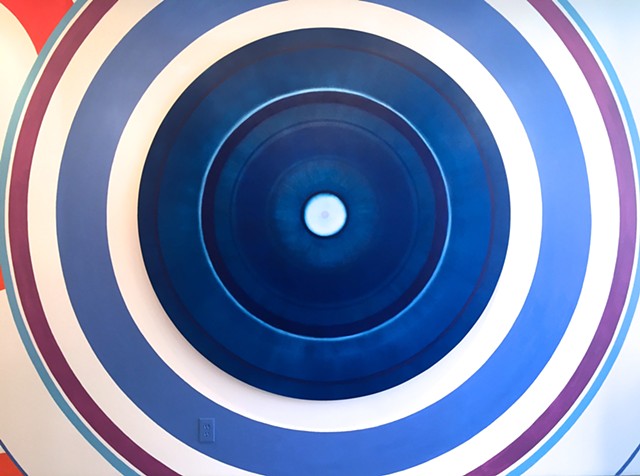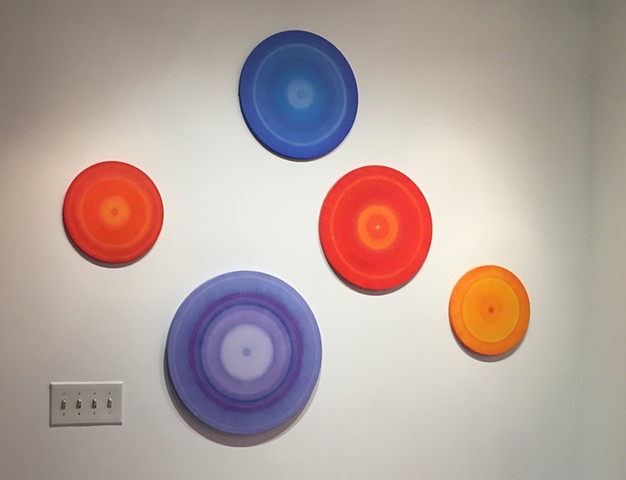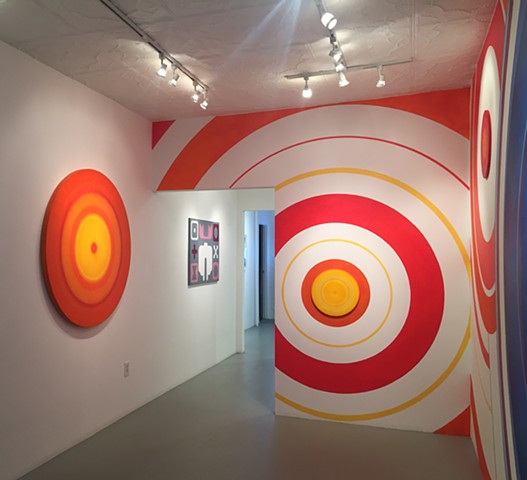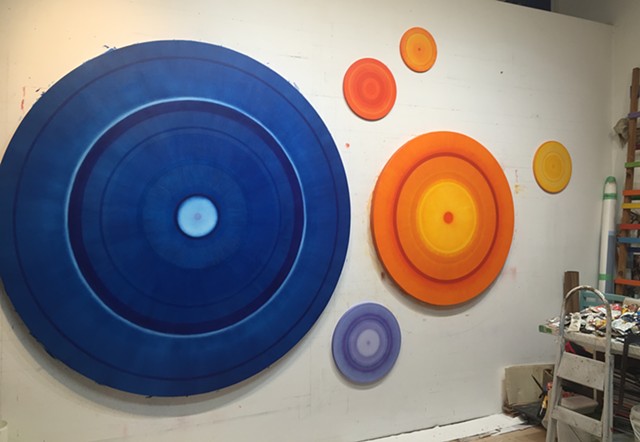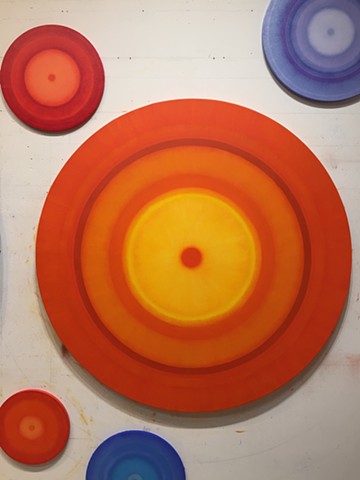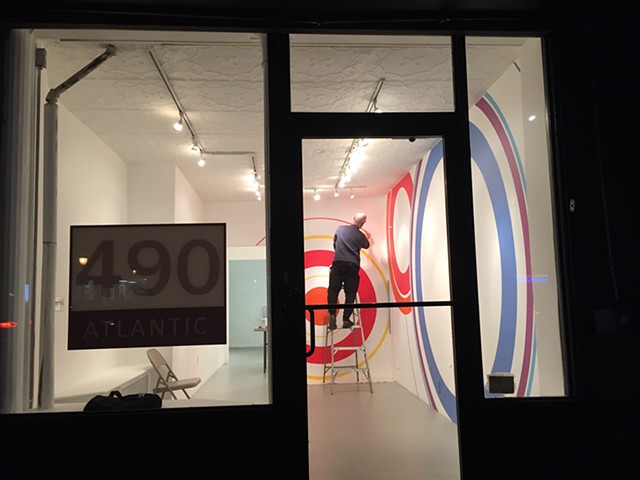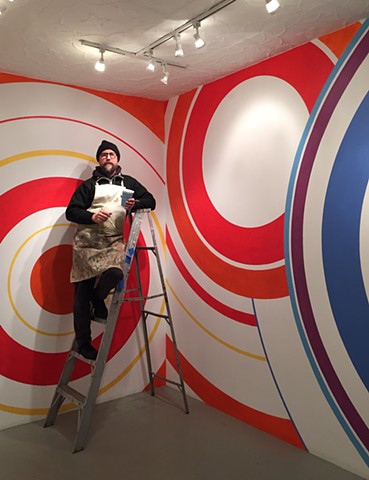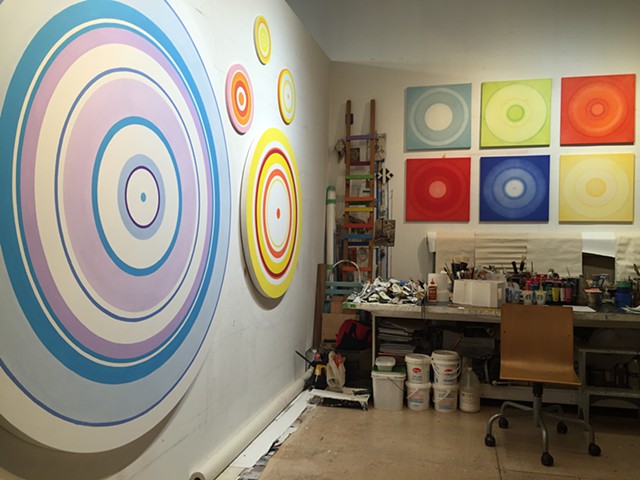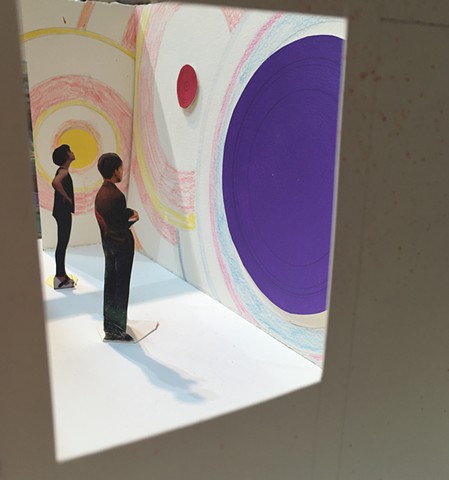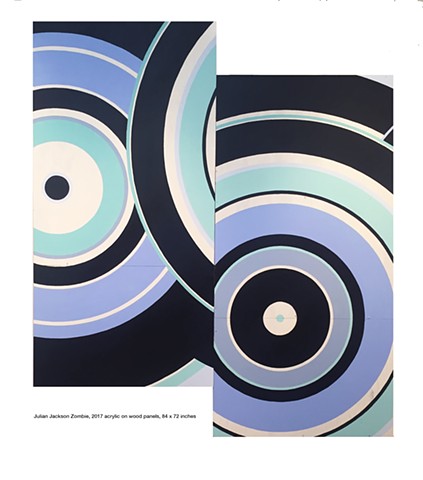CIRCULAR BREATHING: 2019
Since the mid 1990s I have explored circular motifs in installations utilizing pebbles, stones, flower petals, osage oranges, cherries, sticks, strings, and photography in Germany, Austria, and various residencies in the US. (see Nature Works) More recently I have been making paintings and watercolors exploring this essential geometric form.
The first circle any of us see is probably the iris and pupil of our mother’s eye. Of eyes, Leonardo da Vinci wrote, ”Who would believe that so small a space could contain the images of all the universe?” We look to the heavens and see the circle of the sun, the circle of the moon. We are aware of our world as the circle that we can see around us, and we know that all of these things are in motion. Every day as the earth turns on its axis, each of us makes a great circle around the center of the earth, our planet. In the course of a year we will all complete a circle around the sun. Each month we watch as the moon, sun, and earth do their circular dance through space while we spin through our own circular routines.
The circle is one of the few perfect geometric forms, comprising a unified closure of a single line, expressing the duality of inclusion and exclusion, the emptiness of life, and the seed of all possibility. In a sense, each of us is the center of our own circle, contained and complete within ourselves, yet expanding outward to others like the circular ripples from raindrops on a pond.
The complete nature of the circle has elevated it to a symbol of unity and divinity throughout the world. From Stonehenge to the occulus of the Pantheon, the rose windows of cathedrals, the halos that surround the heads of so many diverse deities, to the expansive cosmic energy expressed in tantric mandalas, the circle has been used to express an ideal state of wholeness and as a means to map our inner world. In Zen Buddhism the circle, Enso, represents completion, enlightenment, both the universe and its opposite, the void. St. Augustine famously described God as a circle whose center is everywhere and circumference nowhere, in other words all pervasive, literally everywhere. In both of these formulations the circle becomes a profound symbol of unity.
Contemporary artists have also long been captivated by the form, ranging from the mystical Hilma Af Klint, the austere Malevich, the jazzy Delaunays and Kandinsky, formalists such as Ilya Bolotowsky, Tadasky, John Dowling, and Leon Polk Smith, early tondos by Carmen Herrera, the targets of Jasper Johns, earth artists such as Nancy Holt, Richard Long, and Andrew Goldsworthy, and many others have all found an incredible diversity of possibility within the form of the circle.
Perhaps in our time, when a complex array of political, regional, and national interests so often clash and struggle for dominance, a sense of unity can be hard to find. But there is a kind of peace to be found within the curving line and optical perfection of the circle. In this recent work I am approaching the circle as a emblem of hope for the restoration of unity and a more peaceful inclusive world. The circle seems to me the perfect symbol of an embracing, energized whole.
JJ, 2019
JULIAN JACKSON
Circular Breathing
490 Gallery, 490 Atlantic Avenue, Brooklyn, NY 11217
January 12 - March 3, 2019
Installation view, Circular Breathing, 2019
